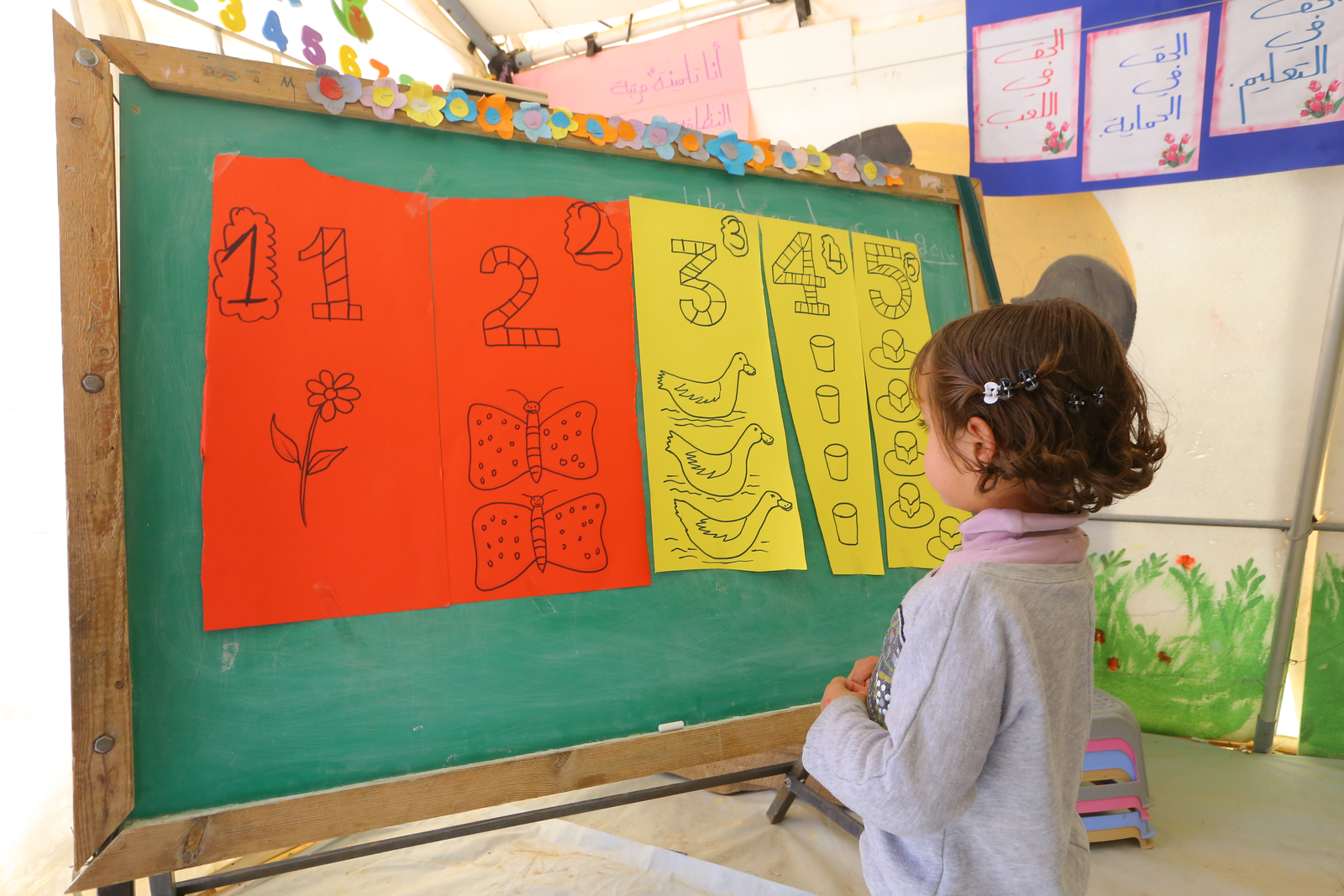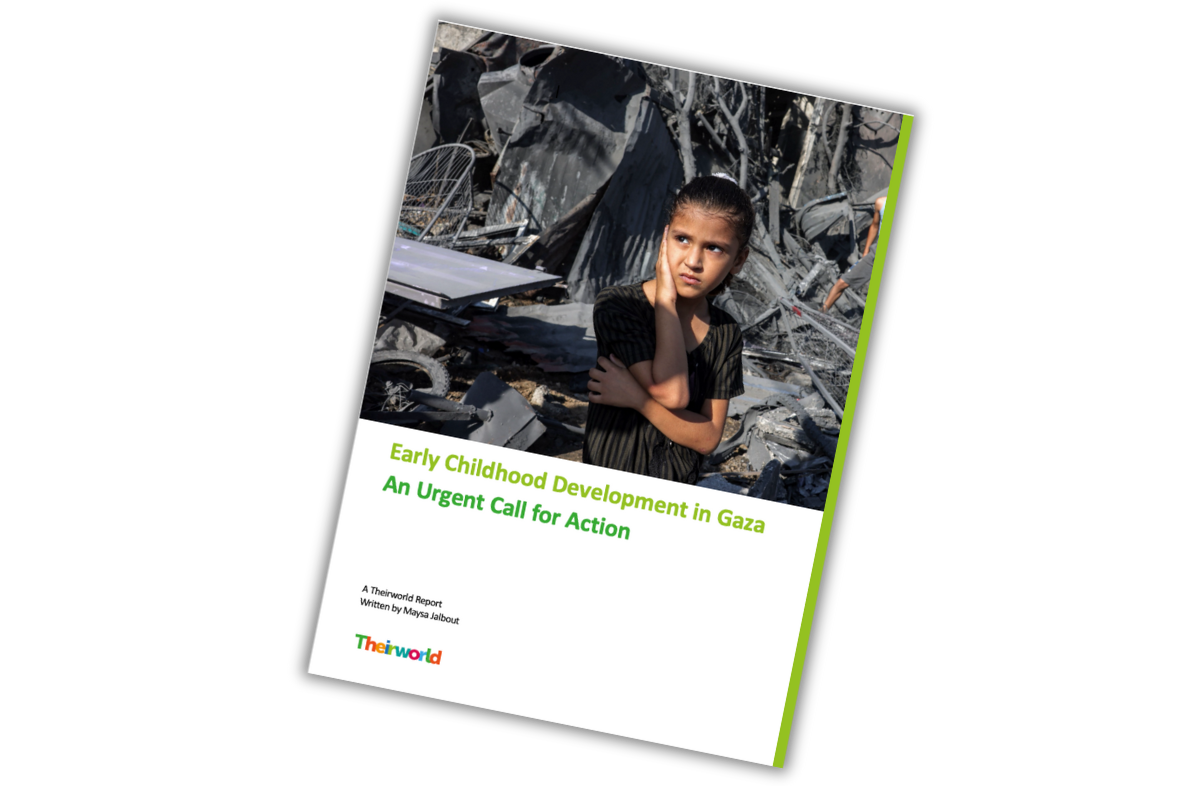
War drills and bomb shelters are part of life in Ukrainian schools
Children in conflicts, Education in emergencies
200,000 children go to classes every day in high-risk areas that are being bombed or where landmines have been planted.
Huddled in a basement, dozens of children cover their heads with their hands, practising what to do if their school comes under attack in eastern Ukraine’s war.
In a conflict that has claimed more than 10,000 lives since 2014, war drills and bomb shelters have become part of daily life for hundreds of schools near the frontline.
At School Number Eight in Sartana village, only six miles from the fighting, an alarm signals children to make their way calmly underground following blue arrows to a bunker.
“We have special signals – three short bells for a fire, one long one for a bombardment,” Olena Lyskonog, a 14-year-old pupil, told AFP.
“We often have this kind of training, so that we will not panic when a real bombardment begins.”
The children go through the drill once a month. Each class has its own underground room equipped with emergency supplies.
Truce agreements have reduced fighting in Ukraine’s war, which started in 2014 following Russia’s annexation of Crimea. Kiev and its Western allies accuse Russia of funnelling troops and arms across the border. Moscow has denied the claims, despite substantial evidence of its involvement.
Clashes still erupt. Rockets and shelling remain threats for towns like Sartana, which is in a Kiev-controlled area but close to regions run by Moscow-backed separatists.
The Donetsk-region town has been repeatedly bombed. But school principal Lyudmyla Korona described the school basement as “the safest place in Sartana”.
In October 2014, Grad rockets fell on a funeral procession killing seven people and injuring another 13. The small town has not been bombed for the past two years thanks to the truce deals, but life here is still far from normal.

“They are constantly shelling near us, we hear it day and night,” pupil Lyskonog said.
According to the UN children’s agency UNICEF, nearly 750 schools were damaged or destroyed in eastern Ukraine over the more than four years of the conflict.
Some 200,000 children are still forced to attend school in areas at risk of clashes, according to the UNICEF statement released in May.
Lyskonog’s school gives regular lessons on how to deal with landmines scattered across the region since the start of hostilities.
Posters lining the halls read: “If you see a mine, do not touch it, do not come close to it, call firefighters.”
Pupil Vadym Kononov was 12 when the conflict began and his parents initially protected him from the reality of war by describing the shelling as “fireworks”.
Now the boy can easily tell the difference between anti-personnel and anti-tank mines but says he hopes he will never have to use this skill in real life.
“After training like this, people have an idea of what the mines look like,” he said.
Around 60 miles to the north of Sartana, the Kiev-controlled town of Krasnogorivka lies directly on the frontline. Two-thirds of the town’s population fled because of the fighting and three of its five schools have closed.
Two of the shuttered facilities were heavily damaged by bombing and the third no longer has heating as a result of the fighting.
They are constantly shelling near us, we hear it day and night. Olena Lyskonog, 14-year-old student
School Number Two’s roof was ripped off by three Grad missiles in May last year, just a day after the end of term. The three-storey 1930s building has remained empty since.
“I woke up and I saw that our school was gone,” said Illya Dolgikh, a 17-year-old former pupil.
He said he slept through the raid that destroyed the building and only found out the following morning.
“When I was told what happened, I felt dizzy,” the teenager said.
In Krasnogorivka, local authorities have started work to restore School Number Two but there is no projected date for the children to return to their school.
The sound of fighting can still be heard from the town almost every night.
“Life goes on,” said head teacher Olena Mykhatko. “But you cannot get used to it.”
More news

Education under fire: The laptops helping thousands of Ukrainian students rebuild their future
